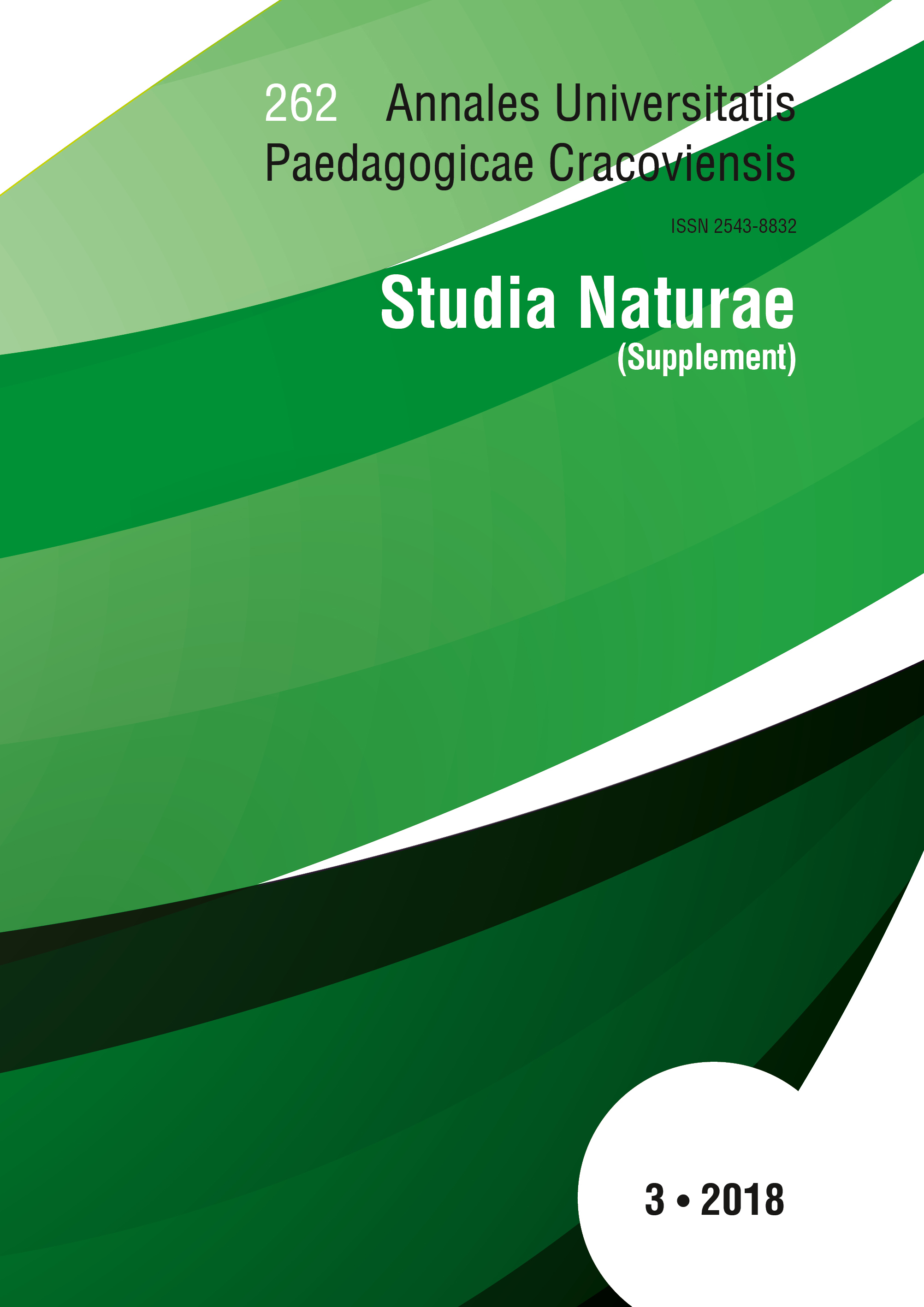Antibiofilm activity of mushroom extracts against Staphylococcus aureus
DOI:
https://doi.org/10.24917/25438832.3supp.2Keywords:
biofilm, fungi, ixodid ticks (Acari), milk, Staphylococcus aureusAbstract
Mushrooms are a renowned source of products with an array of bioactivities, from antibacterial to antiviral, cytotoxic, antifeeding, antifungal or antioxidant and might be a valuable resource in the search of new bioactive extracts to inhibit biofilm production. We demonstrate the effect of five mushroom water extracts Macrolepiota procera, Pleurotus ostreatus, Auricularia auricula-judae, Armillaria mellea and Laetiporus sulphurous on biofilm formation of four Staphylococcus aureus strains isolated from ixodid ticks (Acari) and ewe´s milk. The PCR was used for detection of virulence genes (hla, isdA, B, bbp, sirB, fnbpA, sdrE, agr II). The ability of biofilm formation and anti-biofilm activity of mushrooms extracts was assessed in a quantitative crystal violet assay. The biofilm formation of S. aureus strains was significantly reduced by all mushrooms extracts (p < 0.001). We showed that more significant anti-biofilm effect of the extracts was of Staphylococcus aureus isolated from ixodid ticks in comparison to Staphylococcus aureus isolated from ewe´s milk. In the present study, A. mellea, P. ostreatus, L. sulphurous, A. auricula-judae and M. procera extracts inhibited biofilm formation by 70.87%, 67.00%, 64.14%, 62.77% and 47.71%, respectively. The results suggest that compounds in mushrooms extracts might be useful to control and handle detrimental infections caused by animal and human pathogens.
Downloads
Metrics
References
Alves, M.J., Ferreira, I.C.F.R., Lourenço, I., Costa, E., Martins, A., Pintado, M. (2014). Wild mushroom extracts as inhibitors of bacterial Bbiofilm formation. Pathogens, 3, 667–679. https://doi.org/10.3390/pathogens3030667
Booth, M.C., Pence L.M., Mahasreshti P., Callegan M.C., Gilmore M.S. (2001). Clonal associations among Staphylococcus aureus isolates from various sites of infection. Infection and Immunity, 69(1), 345–352. https://doi.org/10.1128/iai.69.1.345-352.2001
Carvalho, M.P., Türck, P., Abraham, W.R. (2015). Secondary metabolites control the associated bacterial communities of saprophytic Basidiomycotina fungi. Microbes and environments, 30, 196–198. https://doi.org/10.1264/jsme2.ME14139
Cucarella, C., Solano, C., Valle, J., Amorena, B., Lasa, I., Penadés, J.R. (2001). Bap, a Staphylococcus aureus surface protein involved in biofilm formation. Journal of Bacteriology, 183, 2888–2896. https://doi.org/10.1128/JB.183.9.2888-2896.2001
Dale, S.E., Sebulsky, M.T., Heinrichs, D.E. (2004). Involvement of SirABC in iron-siderophore import in Staphylococcus aureus. Journal of Bacteriology, 186(24), 8356–8362. https://doi.org/10.1128/JB.186.24.8356-8362.2004
Jarraud, S., Mougel, C., Thioulouse, J., Lina, G., Meugnier, H., Forey, F., Nesme, X., Etienne, J., Vandenesch, F. (2002). Relationships between Staphylococcus aureus genetic background, virulence factors, agr groups (alleles), and human disease. Infection and immunity, 70(2), 631–641. https://doi.org/10.1128/IAI.70.2.631-641.2002
Kateete, D.P., Namazzi, S., Okee, M., Okeng, A., Baluku, H., Musisi, N.L., Katabazi, F.A., Joloba, M.L., Ssentongo, R., Najjuka, F.C. (2011). High prevalence of methicillin resistant Staphylococcus aureus in the surgical units of Mulago hospital in Kampala, Uganda. BMC Research Notes, 4(326). https://doi.org/10.1186/1756-0500-4-326
Kostić, M., Smiljković, M., Petrović, J., Glamočlija, J., Barros, L., Ferreira, I.C.F.R., Ćirić, A., Soković, M. (2017). Chemical, nutritive composition and a wide range of bioactive properties of honey mushroom Armillaria mellea (Vahl: Fr.) Kummer. Food and function, 8, 3239–3249. https://doi.org/0.1039/c7fo00887b
Li, B., Dong, M. (2010). Inhibition of Escherichia coli biofilm by Auricularia auricula extract. Modern Food Science and Technology, 26, 1067–1070.
Liu, H., Lv, J., Qi, X., Ding, Y., Li, D., Hu, L., Wang, L., Yu, F. (2015). The carriage of the serine-aspartate repeat protein-encoding sdr genes among Staphylococcus aureus lineages. Brazilian Journal of Infectious Diseases, 19, 498–502. https://doi.org/10.1016/j.bjid.2015.07.003
Martín-Rodríguez, A.J., Reyes, F., Martín, J., Pérez-Yépez, J., León-Barrios, M., Couttolenc, A., Espinoza, C., Trigos, A., Martín, V.S., Norte, M., Fernández, J.J. (2014). Inhibition of bacterial quorum sensing by extracts from aquatic fungi: first report from marine endophytes. Marine Drugs, 12, 5503–5526. https://doi.org/10.3390/md12115503
Nazzaro, F., Fratianni, F., Coppola, R. (2013). Quorum sensing and phytochemicals. International Journal of Molecular Sciences, 14, 12607–12619. https://doi.org/10.3390/ijms140612607
O’Toole, G.A. (2011). Microtiter dish biofilm formation assay. Journal of Visualized Experiments, 47. https://doi.org/10.3791/2437
Payne, D.J., Gwynn, M.N., Holmes, D.J., Pompliano, D.L. (2007). Drugs for bad bugs: confronting the challenges of antibacterial discovery. Nature reviews. Drug Discovery, 6(1), 29–40. https://doi.org/10.1038/nrd2201
Rasmussen, G., Monecke, S., Ehricht, R., Söderquist, B. (2013). Prevalence of clonal complexes and virulence genes among commensal and invasive Staphylococcus aureus isolates in Sweden. PLoS One, 9, (e99097). https://doi.org/10.1371/journal.pone.0077477
Sabat, A., Melles, D.C., Martirosian, G., Grundmann, H., van Belkum, A., Hryniewicz, W. (2006). Distribution of the serine-aspartate repeat protein-encoding sdr genes among nasal-carriage and invasive Staphylococcus aureus strains. Journal of Clinical Microbiology, 44(3), 1135–1138. https://doi.org/10.1128/JCM.44.3.1135-1138.2006
Shopsin, B., Mathema, B., Alcabes, P., Said-Salim, B., Lina, G., Matsuka, A., Martinez, J., Kreiswirth, B.N. (2003). Prevalence of agr specificity groups among Staphylococcus aureus strains colonizing children and their guardians. Journal of Clinical Microbiology, 41(1), 456–459. https://doi.org/10.1128/JCM.41.1.456-459.2003
Strapáč, I., Baranová, M., Smrčová, M., Bedlovičová, Z. (2016). Antioxidant activity of honey mushrooms (Armillaria mellea). Folia Veterinaria, 60(4), 37–41. https://doi.org/10.1515/FV-2016-0036
Tristan, A., Ying, L., Bes, M., Etienne, J., Vandenesch, F., Lina, G. (2003). Use of multiplex PCR to identify Staphylococcus aureus adhesins involved in human hematogenous infections. Journal of Clinical Microbiology, 41(9), 4465–4467. https://doi.org/10.1128/JCM.41.9.4465-4467.2003
Verkaik, N.J., Boelens, H.A., de Vogel, C.P., Tavakol, M., Bode, L.G., Verbrugh, H.A., van Belkum, A., van Wamel, W.J. (2010). Heterogeneity of the humoral immune response following Staphylococcus aureus bacteremia. European Journal of Clinical Microbiology & Infectious Diseases, 29(5), 509–518. https://doi.org/10.1007/s10096-010-0888-0
Waryah, C.B., Gogoi-Tiwari, J., Wells, K., Eto, K.Y., Masoumi, E., Costantino, P., Kotiw, M., Mukkur, T. (2016). Diversity of virulence factors associated with West Australian methicillin-sensitive Staphylococcus aureus isolates of human origin. BioMed Research International, 1–10. https://doi.org/10.1155/2016/8651918

